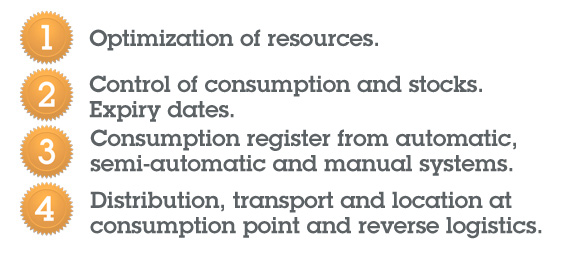












The optimal management of logistics is essential to improve the functioning and increase the efficiency in the performance of services. This is a complex task that demands a service provider with an extensive experience and knowledge of the logistics and technology on which it is based.
Logisdoc efficiently encompasses all these processes of the logistical chain.
The first phase is needs planning, which consists in conducting integrative work with the client, in some cases tasks are distributed among both parties. The key word here is flexibility: going as far as the client needs, adapting to their requirements and to their initial structure.
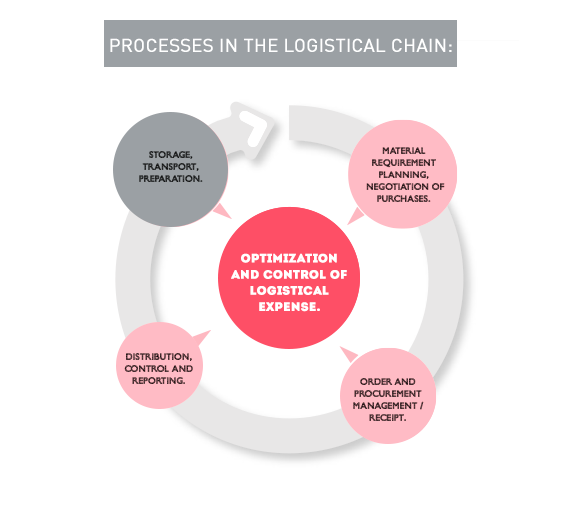
Logisdoc can negotiate purchases with those suppliers the client has previously authorised using a system that provides a strict control of the criteria used. It is always possible to know who has bought what and why. Knowing and applying the legislation.
The processing of orders and the receipt of purchases are done at a Centralised Logistic Platform, which is the operational base. Each logistic platform serves a specific area, as defined in the service protocol.
Within the Centralised Logistic Platform, goods are kept and stored, items are identified and labelled and replenishment orders are prepared and transported to capillary distribution platforms, if necessary.
At the Capillary Distribution Platforms, replenishment orders sent from Consumption Units are readied; returns and internal movements of materials between Consumption Unit and centres are processed.
Inventories and consumption are permanently managed and controlled and the client is reported. Traceability is total and the saving in time, stocks and cost is maximized.

The Central Logistical Platform means going from dispersion to a single service point with specialised personnel and devoted to tasks that provide greater value, a better control of stocks and generally, an optimization of investments and costs.
Centralised procurement results in a significant saving as stocks are reduced, and so are the financial needs stocks generate. There is also an improvement in costs as a result of contracting volume and unified decision making.
Saving also occurs as a result of expense control and optimisation of resources; the use of economies of scale; the reduction in administrative burden; reduction in prices and an increased efficacy, efficiency and agility in the providing of the service.
Our method keeps track of stocks, delivery and location of goods at consumption points with important saving in consumption optimisation, monitoring waste volumes, recording consumption from automatic, semi-automatic and manual systems.
Further advantages of the system include distribution, transport and location of consumption point and reverse logistics, permanent staffing at work centres, internal movement of materials among units, product traceability, definition of consumer catalogues and personnel training.
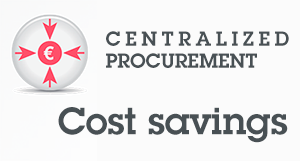
With the resulting savings from stock reduction, improvements in costs from contracting volume and unified decision-making.
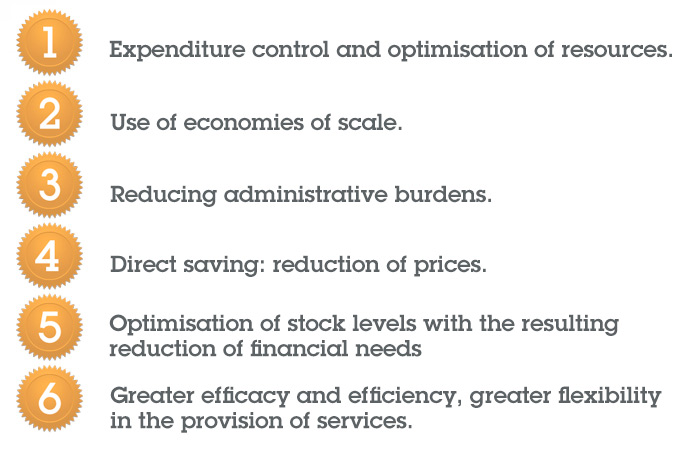
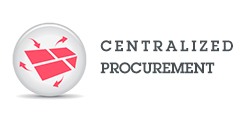
From dispersion to a single service point. Personnel devoted to roles that provide increased value, more efficient stock control, plant optimisation.

Better technical and human resources to meet client demands. Distribution to platform and capillary distribution to multiple centres.

